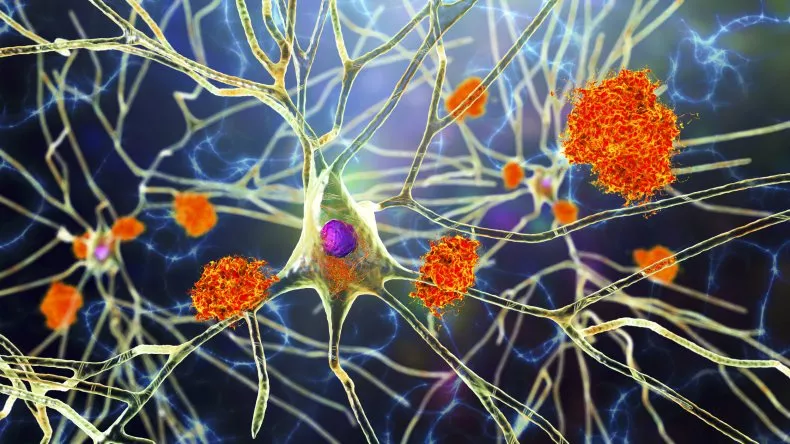The coffee grounds you throw away every morning might hold quantum secrets that could help protect against dementia and other conditions.
Scientists have discovered that something called caffeic-acid based carbon quantum dots (CACQDs), which can be made from coffee grounds, may protect neurons in the brain from the damage caused by several neurodegenerative diseases, according to new research in the journal Environmental Research.
These CACQDs were only protective of the neurons against neurodegenerative conditions if the disease was triggered by factors including obesity, age, and exposure to pesticides and other toxic environmental chemicals.
“Caffeic-acid based Carbon Quantum Dots have the potential to be transformative in the treatment of neurodegenerative disorders,” paper co-author Jyotish Kumar, a doctoral student in the Department of Chemistry and Biochemistry at The University of Texas at El Paso, said in a statement. “This is because none of the current treatments resolve the diseases; they only help manage the symptoms. Our aim is to find a cure by addressing the atomic and molecular underpinnings that drive these conditions.”

Used coffee grounds in a bin. Scientists have found quantum dots in this common kitchen waste product may protect the brain against neurodegeneration.
Rasa Petreikiene/iStock / Getty Images Plus
Neurodegenerative diseases include Alzheimer’s disease—a form of dementia—Parkinson’s disease and Huntington’s disease, all of which are associated with primarily the loss of neurons or brain cells and the resultant loss of brain function. Millions of people across the United States live with these conditions, and the cost of caring for them amounts to billions every year.
These conditions can be genetic or triggered by lifestyle or environmental factors. Environmentally caused neurodegenerative conditions often share traits in their early stages, including increased levels of free radicals in the brain—harmful molecules linked to cancer and other conditions—as well as amyloid-forming proteins that start to aggregate and may lead to plaques of amyloid in the brain. Amyloid plaques are one of the hallmarks of dementia.
The researchers at The University of Texas at El Paso found that the CACQDs were neuroprotective in test tube experiments, cell lines, and other models of Parkinson’s where the condition had been caused by the pesticide paraquat. The CACQD acted by removing free radicals and preventing them from causing damage, as well as inhibiting the aggregation of amyloid protein fragments.
The scientists suggest that the CACQDs could therefore be used in the very early stages of neurodegenerative diseases to prevent it from developing further.
The sequelae to neurodegeneration are multifactorial, according to Mahesh Narayan, a professor at The University of Texas at El Paso, fellow of the Royal Society of Chemistry, and paper co-author.

Stock image of amyloid plaques growing around a neuron. Neurodegenerative diseases like Alzheimer’s are associated with loss of neurons or brain cells and loss of brain function.
ISTOCK / GETTY IMAGES PLUSQuantum dots are semiconductor particles only a few nanometers in diameter that have several strange and special properties that are applicable across biology, chemistry and physics.
“Carbon Quantum Dots (CQDs) are ‘bite-sized’ nanoparticles…that are synthesized from carbon-containing precursors such as fruit peel, waste paper, and even salmon,” Narayan said.
These CACQDs are extracted from the coffee grounds by cooking them at 200 degrees for four hours, which makes the process both economical and sustainable due to the abundance of coffee grounds.
“We used a chemically friendly (green Chemistry) approach which mimicked ‘cooking’ in hot water allowing the caffeic acid to be recarbonized into Caffeic Acid Derived Carbon Quantum Dots (CACQDs). As mentioned, they can be prepared using other organic waste matter as well,” Narayan explained.
The researchers hope to further investigate the applications of these CACQDs in treating neurodegeneration, aiming to develop a medication that may prevent environmentally triggered conditions.
“The next step would be to test CACQDs in a vertebrate model of [Alzheimer’s disease] and [Parkinson’s disease] where there is a Blood-Brain Barrier that needs to be ‘transgressed,'” Narayan said.



 November 29, 2023
November 29, 2023 By admin
By admin